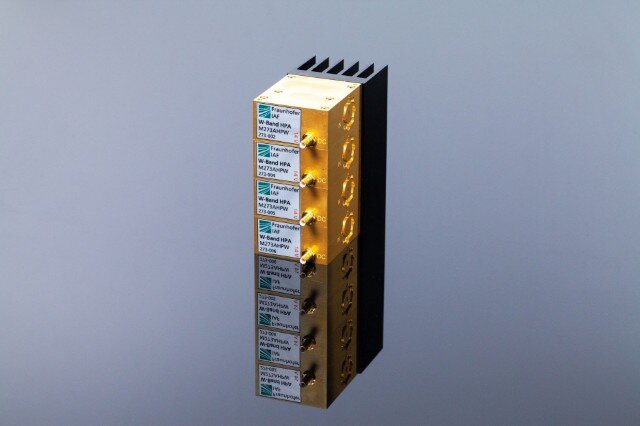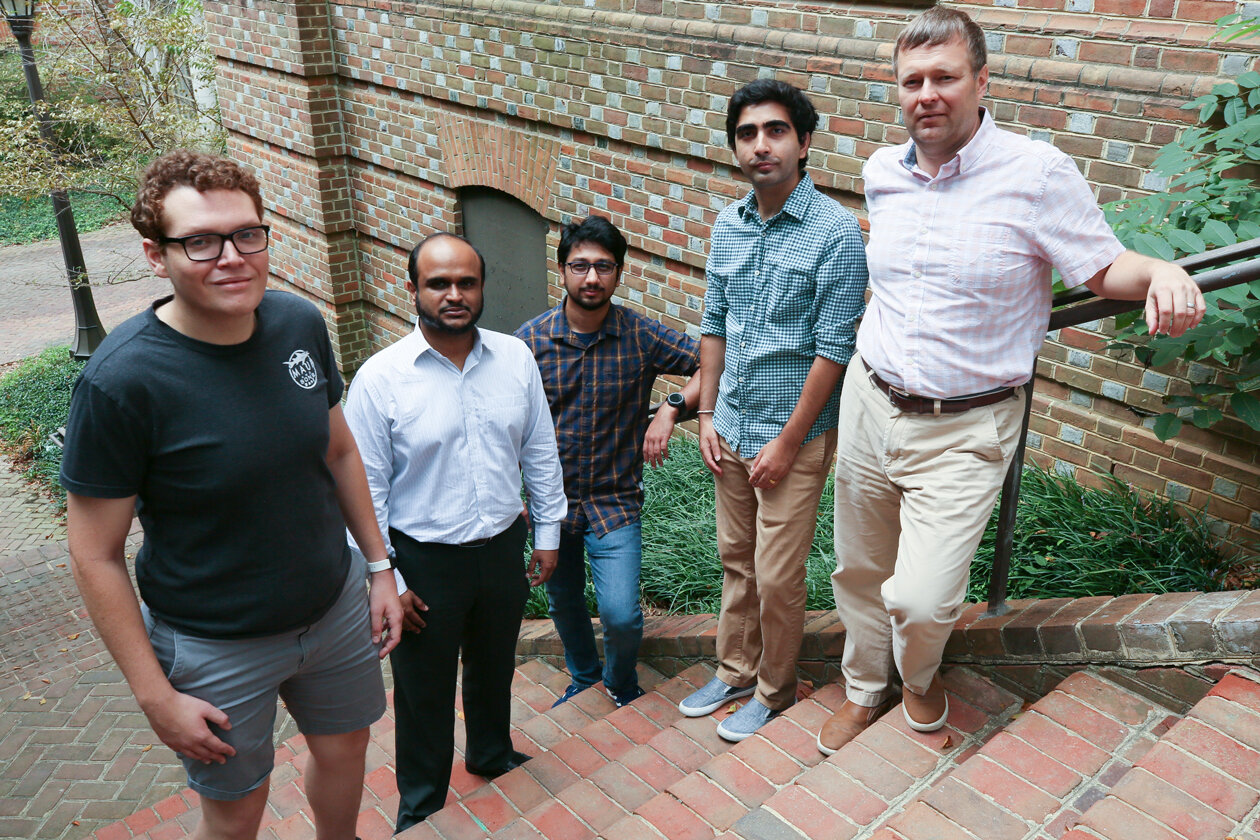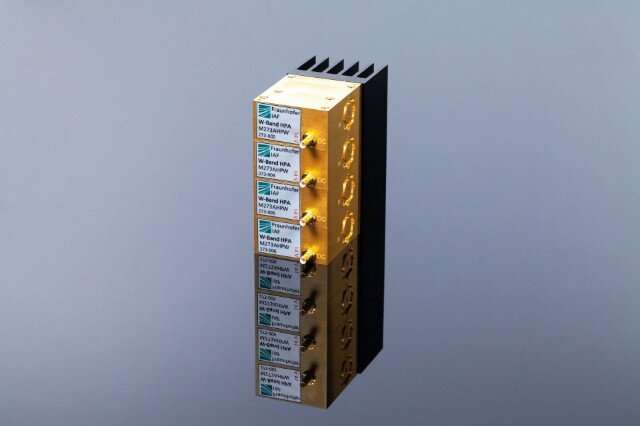
6G mobile communications is expected to pave the way for innovative applications such as artificial intelligence, virtual reality and internet of things by 2030. This will require a much higher performance capability than that of the current 5G mobile standard, involving new hardware solutions. At EuMW 2022, Fraunhofer IAF will therefore present an energy-efficient GaN-based transmitter module for the 6G-relevant frequency ranges above 70 GHz, which was developed jointly with Fraunhofer HHI. The high performance of the module has already been demonstrated at Fraunhofer HHI.
Self-driving cars, telemedicine, automated factories—promising future applications like these in transport, health care and industry depend on information and communications technology that exceeds the performance scope of the current fifth-generation mobile communications standard (5G). 6G mobile communications, which is expected to be introduced in 2030, promises the necessary high-speed networking for data volumes required in the future, with data rates exceeding 1 Tbit/s and latencies down to 100 µs.
The Fraunhofer Institute for Applied Solid State Physics IAF and the Fraunhofer Institute for Telecommunications, Heinrich Hertz Institute, HHI have been working on the novel high-frequency components needed for 6G mobile communications since 2019 as part of the KONFEKT project (“Components for 6G Communications”).
The researchers have developed transmitter modules based on the power semiconductor gallium nitride (GaN), with which the frequency ranges around 80 GHz (E-band) and 140 GHz (D-band) can be tapped for the first time with this technology. The innovative E-band transmitter module, with its high performance that has already been successfully tested by Fraunhofer HHI, will be presented to the expert public at the European Microwave Week (EuMW) in Milan, Italy, from September 25 to 30, 2022.
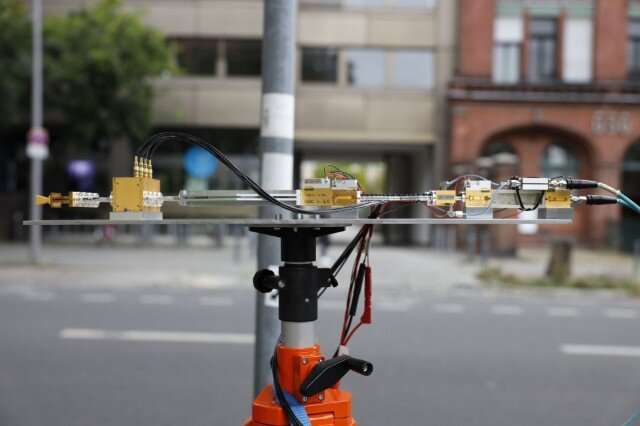
Innovative hardware due to broadband compound semiconductors and SLM processes
“6G requires new types of hardware because of the high demands on performance and efficiency,” explains Dr. Michael Mikulla from Fraunhofer IAF, who is coordinating the KONFEKT project. “Components at the current state of the art are reaching their limits. This applies in particular to the underlying semiconductor technology and the assembly and antenna technology. To achieve better results in output power, bandwidth and power efficiency, we use GaN-based monolithic integrated microwave circuits (MMICs) for our module instead of the silicon circuits currently in use. As a wide-bandgap semiconductor, GaN can process higher voltages and at the same time enables significantly lower-loss and more compact components. In addition, we are eliminating surface mount and planar packaging structures to design a lower-loss beamforming architecture with waveguides and inherent parallel circuitry.”
Fraunhofer HHI is also heavily involved in the evaluation of 3D-printed waveguides. Several components, including power splitters, antennas and antenna feeders, have been designed, fabricated and characterized using the selective laser melting (SLM) process. This process also makes it possible to quickly and cost-effectively manufacture components that cannot be produced using conventional methods, paving the way for the development of 6G technology.
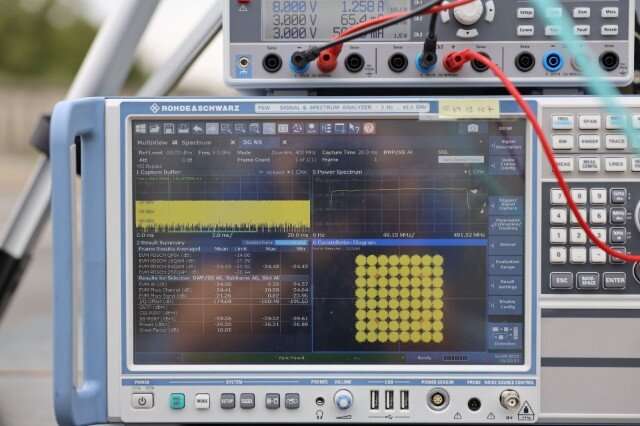
“Through these technical innovations, the Fraunhofer Institutes IAF and HHI are taking Germany and Europe a significant step forward towards the mobile communications of the future, while at the same time making an important contribution to domestic technological sovereignty,” Mikulla says.
High-performance transmitter modules for future 6G frequency bands successfully demonstrated
The E-band module achieves a linear output power of 1 W in the frequency range from 81 GHz to 86 GHz by coupling the transmit power of four individual modules with extremely low-loss waveguide components. This makes it suitable for broadband point-to-point data links over long distances, which is a key capability for future 6G architectures.

Various transmission experiments conducted by Fraunhofer HHI have already demonstrated the performance of the jointly developed components: In different outdoor scenarios, signals corresponding to the current development specifications of 5G (5G-NR Release 16 of the global mobile communications standardization organization 3GPP) were transmitted at 85 GHz with a bandwidth of 400 MHz.
With a clear line-of-sight, data was successfully transmitted over a distance of 600 meters in 64-symbol quadrature amplitude modulation (64-QAM), ensuring a high bandwidth efficiency of 6 bits/s/Hz. The Error Vector Magnitude (EVM) of the received signal was -24.43 dB, well below the 3GPP limit of -20.92 dB. With line-of-sight obstructed by trees and parked vehicles, 16QAM modulated data could be successfully transmitted over a distance of 150 meters. Even with a completely blocked line-of-sight between transmitter and receiver, it was still possible to transmit and successfully receive four-phase modulated data (Quaternary Phase-Shift Keying, QPSK) with an efficiency of 2 bits/s/Hz. The high signal-to-noise ratio of sometimes more than 20 dB in all scenarios is remarkable, especially considering the frequency range, and is only made possible by the high performance of the developed components.
In a second approach, a transmitter module for the frequency range around 140 GHz was developed, combining an output power of more than 100 mW with an extreme bandwidth of 20 GHz. Tests with this module are still pending. Both transmitter modules are ideal components for the development and testing of future 6G systems in the terahertz frequency range.

